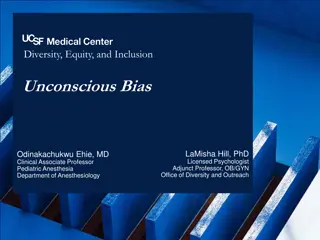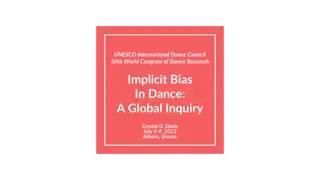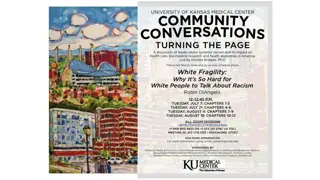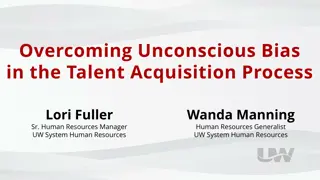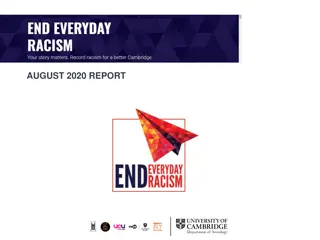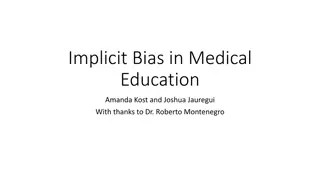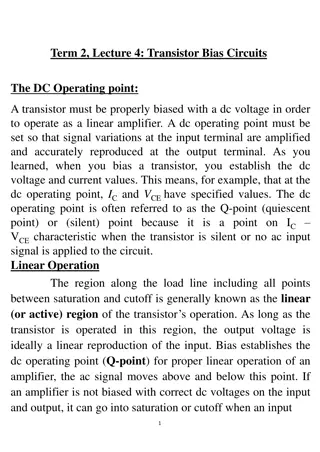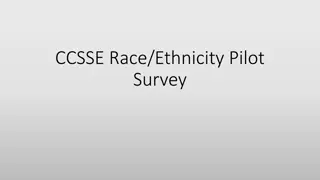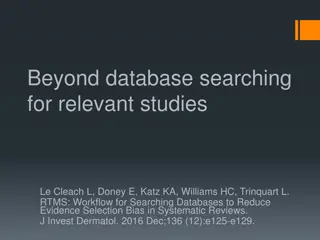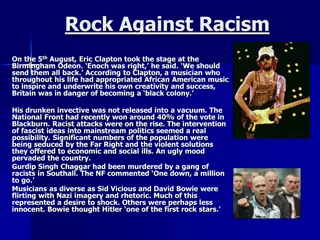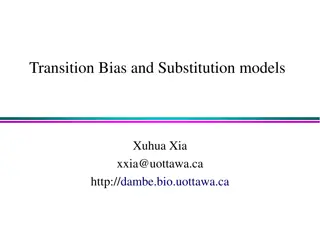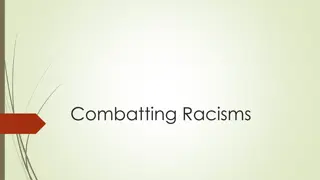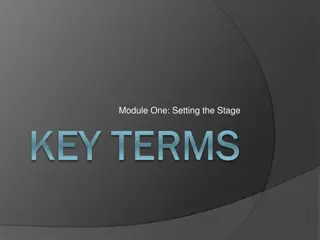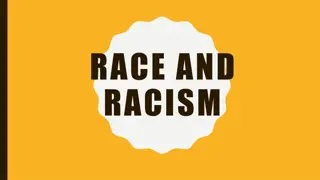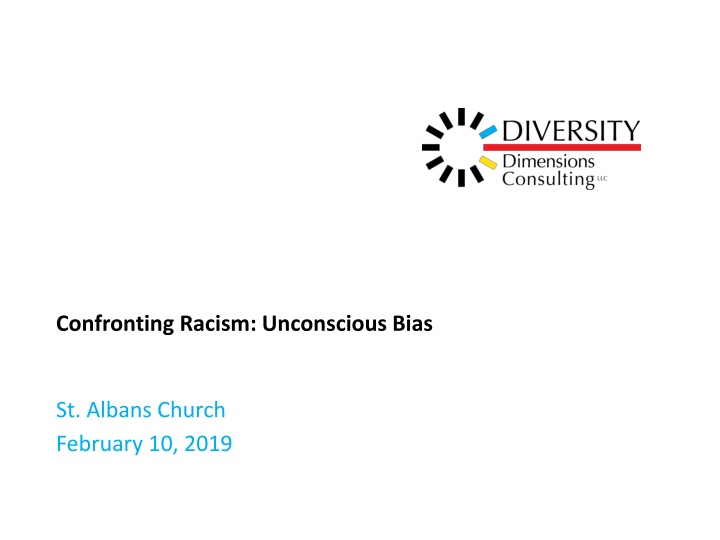
Unconscious Bias and Confronting Racism in Society
Explore the concept of unconscious bias, its impact on decision-making processes, and how it influences behaviors in various settings. Learn how to recognize and address biases to create a more inclusive environment.
Download Presentation

Please find below an Image/Link to download the presentation.
The content on the website is provided AS IS for your information and personal use only. It may not be sold, licensed, or shared on other websites without obtaining consent from the author. If you encounter any issues during the download, it is possible that the publisher has removed the file from their server.
You are allowed to download the files provided on this website for personal or commercial use, subject to the condition that they are used lawfully. All files are the property of their respective owners.
The content on the website is provided AS IS for your information and personal use only. It may not be sold, licensed, or shared on other websites without obtaining consent from the author.
E N D
Presentation Transcript
Confronting Racism: Unconscious Bias St. Albans Church February 10, 2019
What is Implicit or Unconscious Bias? Mental associations without awareness, intention or control A tendency or inclination that results in judgement without question
John Ridley Stroop, 1935 SLB CFLTK CFLTK SPRND HLMG CFLTK SLB SPRND SLB SPRND HLMG CFLTK HLMG SPRND CFLTK
John Ridley Stroop, 1935 RED GREEN YELLOW BLUE GREEN BROWN PURPLE YELLOW BLUE BROWN BROWN BLUE YELLOW GREEN RED
Implicit Association Test (Harvard) https://implicit.harvard.edu/implicit/selectatest.html
Focusing on Unconscious Bias Unconscious bias is simply listening through the lens of our experiences. Our brains are hard-wired to create shortcuts and associations both as a fight or flight evolutionary response and to efficiently manage millions of pieces of data/stimuli. The problem with unconscious bias is that decisions are made every day that can have an adverse impact in the workplace especially in hiring, promotion, rewards, assignments, professional development
Discussion: Discussion: What shapes your lens? Early relationships Norms of behavior Family values Eye contact Geography Language Beliefs Health Rules Friends and Colleagues Socioeconomic status Political preferences Sexual orientation Gender identity Generation Ability Faith Race Media Schools Education Profession Adversity Cultural events Personal events Historical events Exposure to difference Community Government Civic affiliations Social networks Religious institutions Professional organizations
Take a P.A.U.S.E. A quick way to check your reaction. P Pay attention to what s actually happening, beneath the judgments and assessments A Acknowledge your own reactions, interpretations and judgments U Understand the other possible reactions, interpretations and judgments that may be possible S Search for the most empowering, productive way to deal with the situation E Execute your action plan
Discuss Discuss What will you take on as a result of today s discussion?

